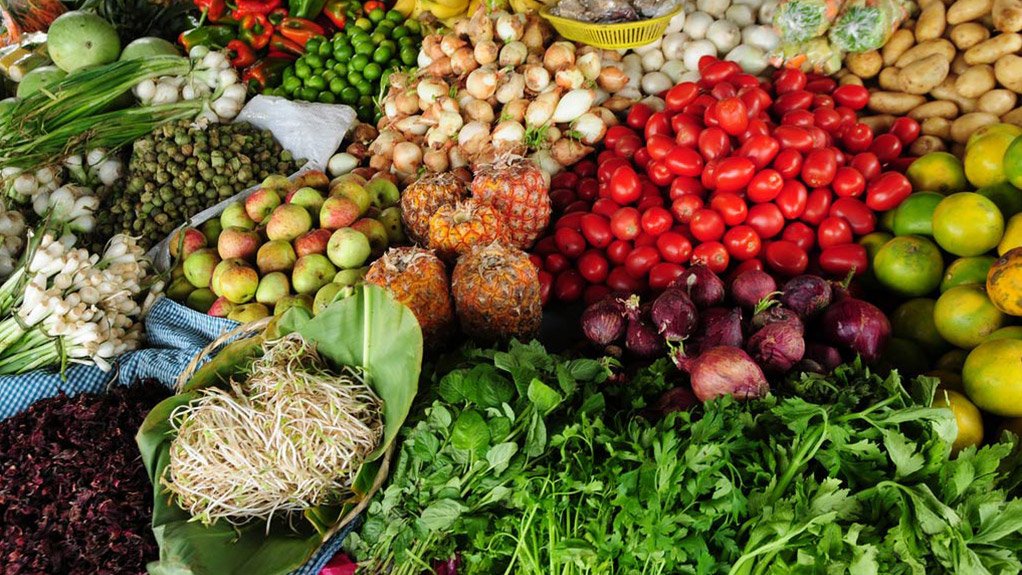South African food inflation accelerated again in May
Year-on-year food and non-alcoholic beverage (NAB) inflation (hereafter to be referred to simply as food inflation) accelerated in May, for the second consecutive month, the Bureau for Food and Agricultural Policy (BFAP) has reported, in its latest Food Inflation Brief. It was also the second month in a row that food inflation was higher than consumer price index (CPI) headline inflation. Further, May’s year-on-year food inflation was the highest recorded since March/April last year.
Food inflation in May was 4.8%, year-on-year, while the figure for CPI headline was 2.8%. May’s food inflation was 0.8 percentage points higher than that in April, but CPI headline inflation in May remained almost the same as in April. Food inflation month-on-month increased by 1.1% in May, while the equivalent figure for CPI headline inflation was 0.2%.
Regarding wider economic factors that affected agriculture, in May the rand appreciated against the dollar by 1.7%, year-on-year, and by 4.3%, month-on-month. The CPI for “electricity and other fuels” was up 11.7%, year-on-year, and 0.1%, month-on-month. However, the CPI for “fuel” was down -14.9%, year-on-year, and by -1.1%, month-on-month.
The year-on-year inflation of the various food categories in May were – fruits and nuts, 13.5%; vegetables, 10.3%; NAB, 6.8%; oils and fats, 5.6%; fish and other seafood, 4.9%; sugar and sugar-rich foods, 4.5%; cereal products, also 4.5%; meat, 4.4%; and dairy and eggs, 0.3%. The figures for month-on-month inflation were vegetables, 5.9%; oils and fats, 1.2%; meat, also 1.2%; fish and other seafood, 1%; diary and eggs, 0.1%; NAB, also 0.1%; and sugar and sugar-rich foods, again 0.1%. Fruit and nuts saw month-on-month deflation of -1.3%.
Regarding inflation on commonly bought food items, those which saw year-on-year inflation of more than 5% in May were, from highest to lowest, fruit juice concentrate (32.6%), lettuce (27.1%), carrots (23.4%), bananas (21.4%), apples (17.4%), instant coffee (16.4%), maize meal (14.5%), sweet potatoes (14%), beef – rump, sirloin, chuck, T-bone – (12,7%), spinach (12.3%), Ceylon/black tea (10.3%), mutton and lamb – chops, stew, neck, leg (8.9%), fresh or frozen hake (also 8.9%), various baked goods (8.6%), beef – fillet, mince, offal (8.1%), dried beans (7.6%), ham (7.5%), cabbage (6.5%), sugar-rich foods (6.3%), avocado (5.8%), peanut butter (also 5.8%), potatoes (5.4%), and fizzy drinks (5.2%).
Foods which experienced year-on-year deflation in May were (from the largest deflation to the smallest) baby cereal, corned meat, non-individually quick-frozen chicken portions, tomatoes, sausages, rice, mutton and lamb offal, fresh milk, eggs, whole fresh chicken, baby milk formula, biltong, peanuts, canned baked beans, chicken giblets, mixed spices, wheat flour, canned tuna, pumpkin, oranges, and pork fillet.
The cost of the BFAP’s Thrifty Healthy Food Basket (THFB) in May increased by 3.3%, or R127, year-on-year, and by 0.6%, or R22, month-on-month. The THFB is composed of a balanced mixture of 26 food items from all the food groups and is designed to feed a reference family of two adults and one older and one younger child for a month. Buying the THFB would have cost a low-income family 30.7% of its total income in May.
“Food inflation pressures are expected to ease in the coming months,” summed up the BFAP. “The rand has remained stronger against the US dollar (perhaps dollar weakness), offering some price stability. However, uncertainty surrounding the policy direction of the new US government and its potential impact on exchange rates remains a key risk factor. The anticipated rebound in the summer crop harvest may provide relief for related food products and livestock producers through animal feed costs.
"Nonetheless, the ongoing FMD [food and mouth disease] outbreak remains a critical concern. Increased local supply due to export bans and FMD-related slaughters could place downward pressure on beef prices in the near term, with timing highly dependent on the success of containment measures. Another factor to monitor is the fuel levy and its potential impact on food inflation. While proposed mitigation strategies may help alleviate pressure, their effectiveness will depend on timely and comprehensive implementation.”
Article Enquiry
Email Article
Save Article
Feedback
To advertise email advertising@creamermedia.co.za or click here
Comments
Press Office
Announcements
What's On
Subscribe to improve your user experience...
Option 1 (equivalent of R125 a month):
Receive a weekly copy of Creamer Media's Engineering News & Mining Weekly magazine
(print copy for those in South Africa and e-magazine for those outside of South Africa)
Receive daily email newsletters
Access to full search results
Access archive of magazine back copies
Access to Projects in Progress
Access to ONE Research Report of your choice in PDF format
Option 2 (equivalent of R375 a month):
All benefits from Option 1
PLUS
Access to Creamer Media's Research Channel Africa for ALL Research Reports, in PDF format, on various industrial and mining sectors
including Electricity; Water; Energy Transition; Hydrogen; Roads, Rail and Ports; Coal; Gold; Platinum; Battery Metals; etc.
Already a subscriber?
Forgotten your password?
Receive weekly copy of Creamer Media's Engineering News & Mining Weekly magazine (print copy for those in South Africa and e-magazine for those outside of South Africa)
➕
Recieve daily email newsletters
➕
Access to full search results
➕
Access archive of magazine back copies
➕
Access to Projects in Progress
➕
Access to ONE Research Report of your choice in PDF format
RESEARCH CHANNEL AFRICA
R4500 (equivalent of R375 a month)
SUBSCRIBEAll benefits from Option 1
➕
Access to Creamer Media's Research Channel Africa for ALL Research Reports on various industrial and mining sectors, in PDF format, including on:
Electricity
➕
Water
➕
Energy Transition
➕
Hydrogen
➕
Roads, Rail and Ports
➕
Coal
➕
Gold
➕
Platinum
➕
Battery Metals
➕
etc.
Receive all benefits from Option 1 or Option 2 delivered to numerous people at your company
➕
Multiple User names and Passwords for simultaneous log-ins
➕
Intranet integration access to all in your organisation



















